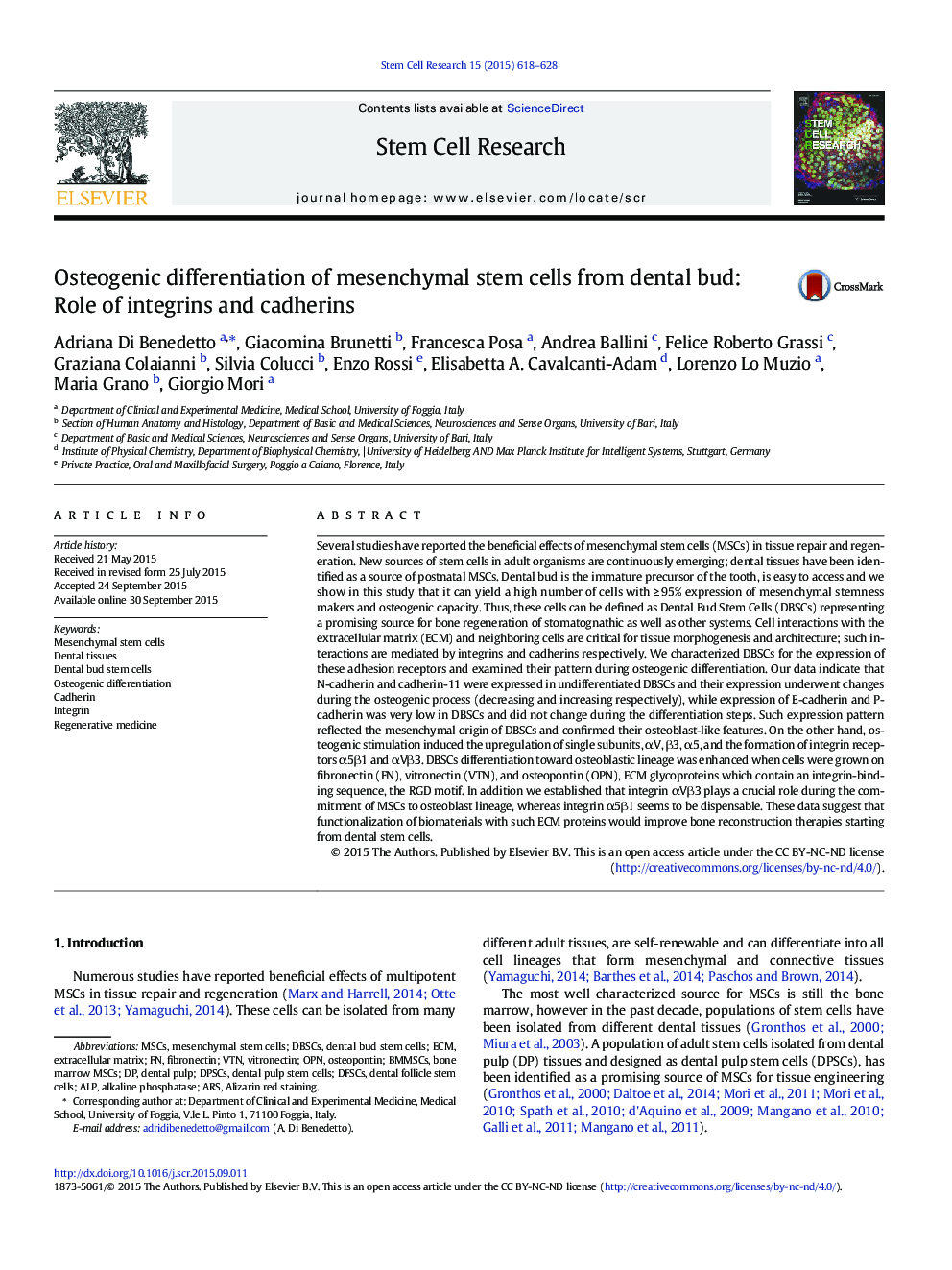| کد مقاله | کد نشریه | سال انتشار | مقاله انگلیسی | نسخه تمام متن |
|---|---|---|---|---|
| 2093908 | 1081985 | 2015 | 11 صفحه PDF | دانلود رایگان |

• DBSCs expressed up to 95% of MSC surface markers
• The expression of “classical” cadherins and integrins reflected the mesenchymal origin of these cells and confirmed their osteoblast-like features.
• The interaction with ECM ligands VTN and OPN enhanced the commitment of DBSCs to osteoblast lineage.
Several studies have reported the beneficial effects of mesenchymal stem cells (MSCs) in tissue repair and regeneration. New sources of stem cells in adult organisms are continuously emerging; dental tissues have been identified as a source of postnatal MSCs. Dental bud is the immature precursor of the tooth, is easy to access and we show in this study that it can yield a high number of cells with ≥ 95% expression of mesenchymal stemness makers and osteogenic capacity. Thus, these cells can be defined as Dental Bud Stem Cells (DBSCs) representing a promising source for bone regeneration of stomatognathic as well as other systems. Cell interactions with the extracellular matrix (ECM) and neighboring cells are critical for tissue morphogenesis and architecture; such interactions are mediated by integrins and cadherins respectively. We characterized DBSCs for the expression of these adhesion receptors and examined their pattern during osteogenic differentiation. Our data indicate that N-cadherin and cadherin-11 were expressed in undifferentiated DBSCs and their expression underwent changes during the osteogenic process (decreasing and increasing respectively), while expression of E-cadherin and P-cadherin was very low in DBSCs and did not change during the differentiation steps. Such expression pattern reflected the mesenchymal origin of DBSCs and confirmed their osteoblast-like features. On the other hand, osteogenic stimulation induced the upregulation of single subunits, αV, β3, α5, and the formation of integrin receptors α5β1 and αVβ3. DBSCs differentiation toward osteoblastic lineage was enhanced when cells were grown on fibronectin (FN), vitronectin (VTN), and osteopontin (OPN), ECM glycoproteins which contain an integrin-binding sequence, the RGD motif. In addition we established that integrin αVβ3 plays a crucial role during the commitment of MSCs to osteoblast lineage, whereas integrin α5β1 seems to be dispensable. These data suggest that functionalization of biomaterials with such ECM proteins would improve bone reconstruction therapies starting from dental stem cells.
Journal: Stem Cell Research - Volume 15, Issue 3, November 2015, Pages 618–628